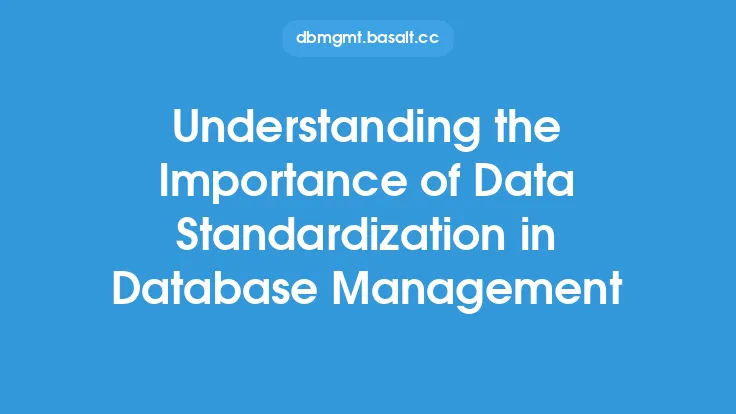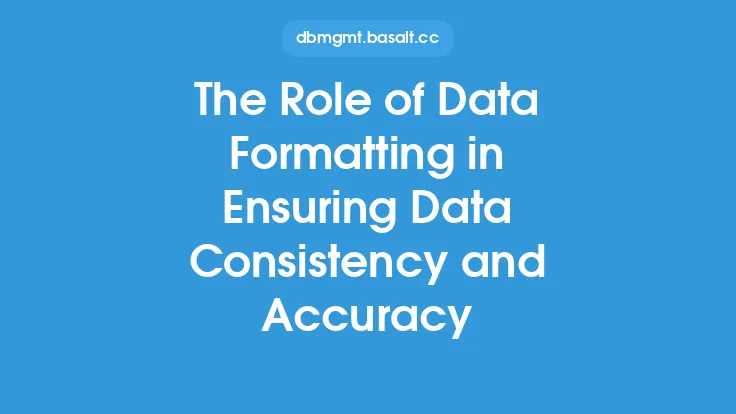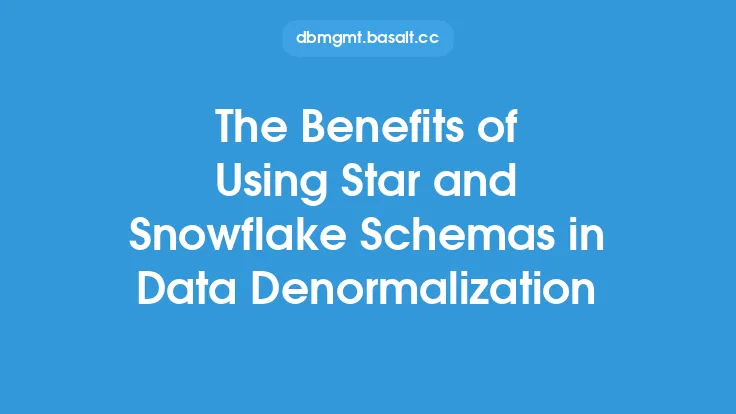Data standardization is a critical process in the realm of data management, and its benefits extend far beyond the confines of a single organization or database. One of the most significant advantages of data standardization is its ability to enhance data sharing and collaboration among different stakeholders, systems, and applications. By standardizing data, organizations can ensure that their data is consistent, accurate, and easily accessible, which in turn facilitates seamless data exchange and collaboration.
Introduction to Data Standardization
Data standardization involves the process of transforming data into a common format, using standardized protocols and definitions, to ensure that data is consistent and comparable across different systems, applications, and organizations. This process enables data to be easily shared, exchanged, and integrated, which is essential for effective collaboration and decision-making. Data standardization can be applied to various types of data, including structured, semi-structured, and unstructured data, and can be implemented using various techniques, such as data mapping, data transformation, and data validation.
Benefits of Data Standardization in Data Sharing
Data standardization plays a vital role in facilitating data sharing among different stakeholders, systems, and applications. By standardizing data, organizations can ensure that their data is consistent, accurate, and easily accessible, which in turn enables seamless data exchange and collaboration. Some of the key benefits of data standardization in data sharing include:
- Improved data consistency: Data standardization ensures that data is consistent across different systems, applications, and organizations, which reduces errors and inconsistencies that can arise during data exchange.
- Enhanced data accuracy: Standardized data is more accurate, as it is based on a common set of definitions and protocols, which reduces the risk of data errors and inconsistencies.
- Increased data accessibility: Standardized data is easily accessible, as it can be easily shared and exchanged among different stakeholders, systems, and applications.
- Better data integration: Standardized data can be easily integrated with other data sources, which enables organizations to create a unified view of their data and make informed decisions.
Technical Aspects of Data Standardization
From a technical perspective, data standardization involves the use of various techniques, such as data mapping, data transformation, and data validation, to transform data into a common format. Data mapping involves creating a map of the data sources and targets, to identify the relationships between different data elements and define the rules for data transformation. Data transformation involves converting data from one format to another, using standardized protocols and definitions, to ensure that data is consistent and comparable. Data validation involves checking data for errors and inconsistencies, to ensure that it meets the required standards and protocols.
Data Standardization and Collaboration
Data standardization is essential for effective collaboration among different stakeholders, systems, and applications. By standardizing data, organizations can ensure that their data is consistent, accurate, and easily accessible, which in turn facilitates seamless data exchange and collaboration. Some of the key benefits of data standardization in collaboration include:
- Improved communication: Standardized data enables effective communication among different stakeholders, systems, and applications, as it provides a common language and set of definitions.
- Enhanced collaboration: Standardized data facilitates collaboration among different stakeholders, systems, and applications, as it enables seamless data exchange and integration.
- Increased productivity: Standardized data increases productivity, as it reduces the time and effort required to exchange and integrate data.
- Better decision-making: Standardized data enables better decision-making, as it provides a unified view of the data and enables organizations to make informed decisions.
Real-World Applications of Data Standardization
Data standardization has numerous real-world applications, including:
- Healthcare: Data standardization is critical in healthcare, as it enables the exchange of patient data among different healthcare providers and systems.
- Finance: Data standardization is essential in finance, as it enables the exchange of financial data among different systems and applications.
- Government: Data standardization is critical in government, as it enables the exchange of data among different agencies and systems.
- Research: Data standardization is essential in research, as it enables the exchange of data among different researchers and systems.
Challenges and Limitations of Data Standardization
While data standardization offers numerous benefits, it also poses several challenges and limitations, including:
- Data complexity: Data standardization can be complex, especially when dealing with large and diverse datasets.
- Data quality: Data standardization requires high-quality data, which can be a challenge, especially when dealing with legacy systems and applications.
- Data governance: Data standardization requires effective data governance, which can be a challenge, especially in organizations with multiple stakeholders and systems.
- Cost and resource constraints: Data standardization can be resource-intensive, which can be a challenge, especially for small and medium-sized organizations.
Best Practices for Implementing Data Standardization
To implement data standardization effectively, organizations should follow best practices, such as:
- Define clear standards and protocols: Organizations should define clear standards and protocols for data standardization, to ensure that data is consistent and comparable.
- Use standardized data formats: Organizations should use standardized data formats, such as XML and JSON, to ensure that data is easily accessible and exchangeable.
- Implement data validation: Organizations should implement data validation, to ensure that data meets the required standards and protocols.
- Provide training and support: Organizations should provide training and support, to ensure that stakeholders understand the benefits and requirements of data standardization.
Conclusion
In conclusion, data standardization is a critical process that offers numerous benefits, including enhanced data sharing and collaboration. By standardizing data, organizations can ensure that their data is consistent, accurate, and easily accessible, which in turn facilitates seamless data exchange and collaboration. While data standardization poses several challenges and limitations, organizations can overcome these by following best practices, such as defining clear standards and protocols, using standardized data formats, implementing data validation, and providing training and support. As data continues to play an increasingly important role in business and society, the importance of data standardization will only continue to grow, making it an essential component of any data management strategy.





